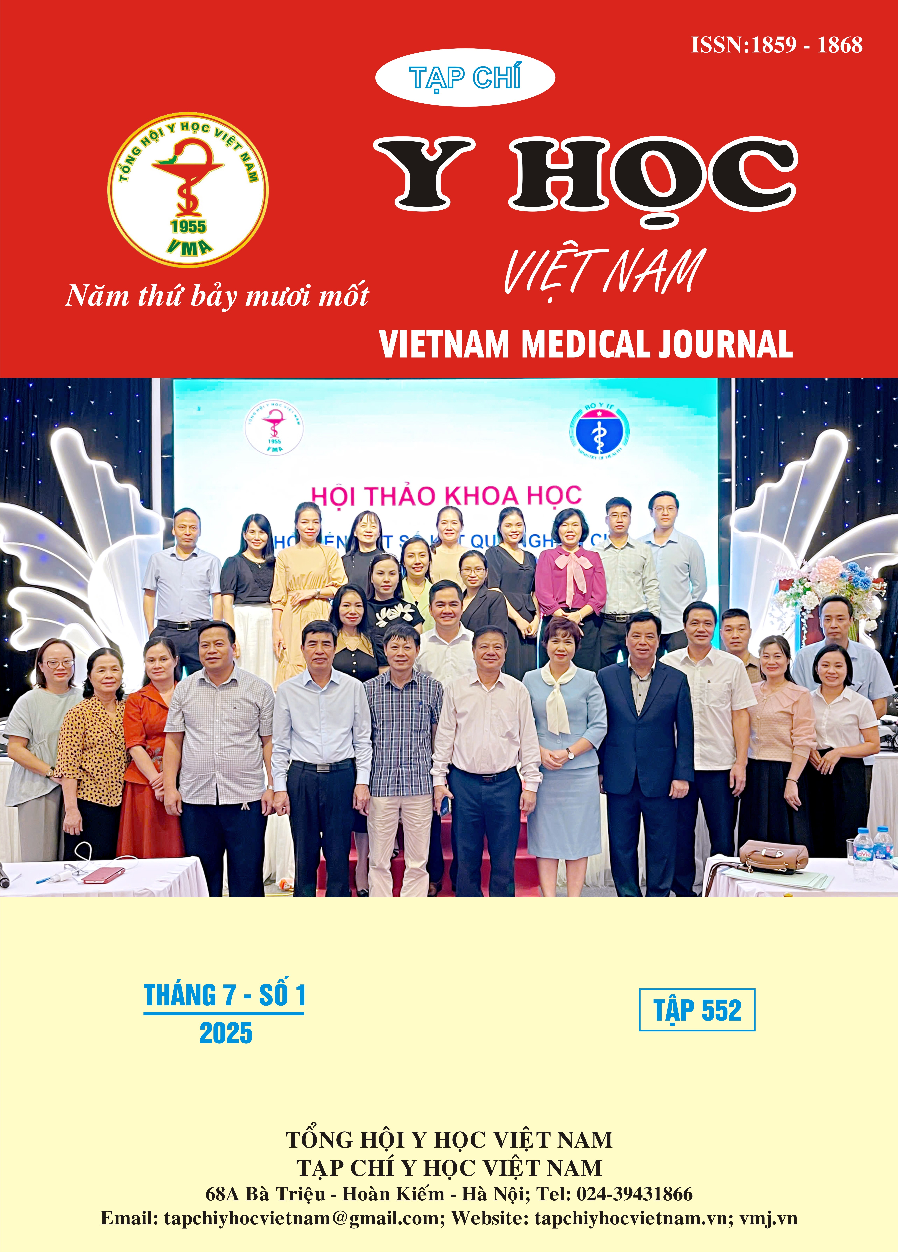THE STUDY OF THE SITUATION, SOME RELATED FACTORS, AND PREGNANCY OUTCOMES IN PARTURIENTS INFECTED WITH GROUP B STREPTOCOCCUS AT NGUYEN TRI PHUONG HOSPITAL IN 2024-2025
Main Article Content
Abstract
Background: Group B Streptococcus, Streptococcus agalactiae (GBS), is a Gram-positive cocci that can be found in the gastrointestinal, urinary, and genital tracts. During pregnancy, carrying Group B Streptococcus is associated with miscarriage, intrauterine fetal death, preterm birth, premature rupture of membranes, early rupture of membranes, amniotic infection, and postpartum infection. Objectives: To determine the prevalence and some factors related to vaginal-rectal Group B Streptococcus infection in pregnant women visiting Nguyen Tri Phuong Hospital in 2024-2025. Materials and methods: 240 pregnant women with gestational age of 35 weeks or more, who visited the Obstetrics and Gynecology Department at Nguyen Tri Phuong Hospital, and who had not used vaginal suppositories or antibiotics within 48 hours before examination and vaginal-rectal culture tests. The study design is a cross-sectional, longitudinal descriptive analysis with prospective data collection. Results: The prevalence of GBS infection in our study was 16.3%. The study found a higher rate of GBS infection in the group with bacterial vaginosis (OR = 5.68; p = 0.001). There was a statistically significant difference in the higher GBS infection rate among individuals with pyuria (OR = 4.05; p = 0.012). In the group with a history of miscarriage, the risk of GBS infection was 3.8 times higher compared to those without any history of miscarriage (OR = 3.8, 95% CI: 1.7 – 8.0). Pregnant women who practiced vaginal douching had a 5.6 times higher risk of GBS infection compared to those who did not (OR = 5.6, 95% CI: 2.4 – 13.1), with a statistically significant difference (p < 0.01). Pregnant women who used river or pond water had a 4.5 times higher risk of GBS infection compared to those using tap water, with a statistically significant difference (p < 0.05). No association was found between the use of feminine hygiene solutions and GBS infection. Conclusion: Our study recorded a GBS prevalence of 16.3% among pregnant women. Statistically significant differences were observed in relation to several factors associated with GBS infection, including obstetric history, history of miscarriage, vaginal douching, and water sources for daily use.
Article Details
Keywords
Group B Streptococcus, vaginal suppositories, pregnancy outcomes
References
2. P. T. Trang, P. T. T. Hiền, Đ. T. Đạt, and D. T. T. Giang. Tỷ lệ mang liên cầu nhóm B và kết quả thai kỳ ở sản phụ sinh tại Bệnh viện Phụ sản Hà Nội. Tạp chí Khoa học và Công nghệ Việt Nam. 2023. vol. 65, no. 7, DOI: 10.31276/VJST. 65(7).08-11.
3. Lương Phong Nhã, Lê Hồng Thịnh, Huỳnh Thanh Liêm và Nguyễn Xuân Thảo. Nghiên cứu tình hình thai phụ nhiễm Streptococcus nhóm B âm đạo- trực tràng, các yếu tố liên quan và kết quả điều trị dự phòng lây truyền từ mẹ sang con tại Bệnh viện Phụ sản thành phố Cần Thơ năm 2019. Tạp chí Y dược học Cần Thơ. 2023. 40, 223-229, https://tapchi.ctump.edu.vn/index.php/ ctump/article/view/825.
4. N. J. Russell et al. Maternal colonization with Group B Streptococcus and serotype distribution worldwide: systematic review and meta-analyses. Clinical infectious diseases. 2017. vol. 65, no. suppl_2, pp. S100-S111, doi: 10.1093/cid/cix658.
5. Slotved HC, Hoffmann S. The Epidemiology of Invasive Group B Streptococcus in Denmark From 2005 to 2018. Front Public Health. 2020 Mar 10. 8,40, doi: 10.3389/fpubh.2020.00040. PMID: 32211361; PMCID: PMC7076979.
6. Navarro-Torné A, Curcio D, Moïsi JC, Jodar L. Burden of invasive group B Streptococcus disease in non-pregnant adults: A systematic review and meta-analysis. PLoS One. 2021 Sep 30. 16(9), e0258030, doi: 10.1371/journal.pone. 0258030.
7. Jichang Chen (2018), "Group B streptococcal colonization in mothers and infants in western China: prevalences and risk factors", BMC Infect Dis. 18(1), tr. 219-229.
8. Forough Javanmanesh (2013), "Prevalence of positive recto-vaginal culture for Group B streptococcus in pregnant women at 35-37 weeks of gestation", Med J Islam Repub Iran. 27(1), tr. 7-11.
9. Tăng Xuân Hải và Quế Anh Trâm. Nghiên cứu thực trạng và một số yếu tố liên quan với nhiễm liên cầu khuẩn nhóm B đường sinh sản ở phụ nữ có thai tuần thứ 35 đến tuần thứ 37 tại Nghệ An năm 2019. Tạp chí Y học Cộng đồng. 2022. Tập 63, số 3, DOI: https://doi.org/10.52163/ yhc.v63i3.323
10. Võ Thị Cẩm Nhung, Ngô Thị Kim Phụng, Phạm Tấn Lộc. Tỷ lệ nhiễm Streptococcus nhóm B ở thai phụ đái tháo đường thai kỳ và các yếu tố liên quan tại Bệnh viện Nhân dân Gia Định. Tạp chí Y học Việt Nam. 2022. 520, số chuyên đề Bệnh viện Nhân dân Gia Định, 251-260


